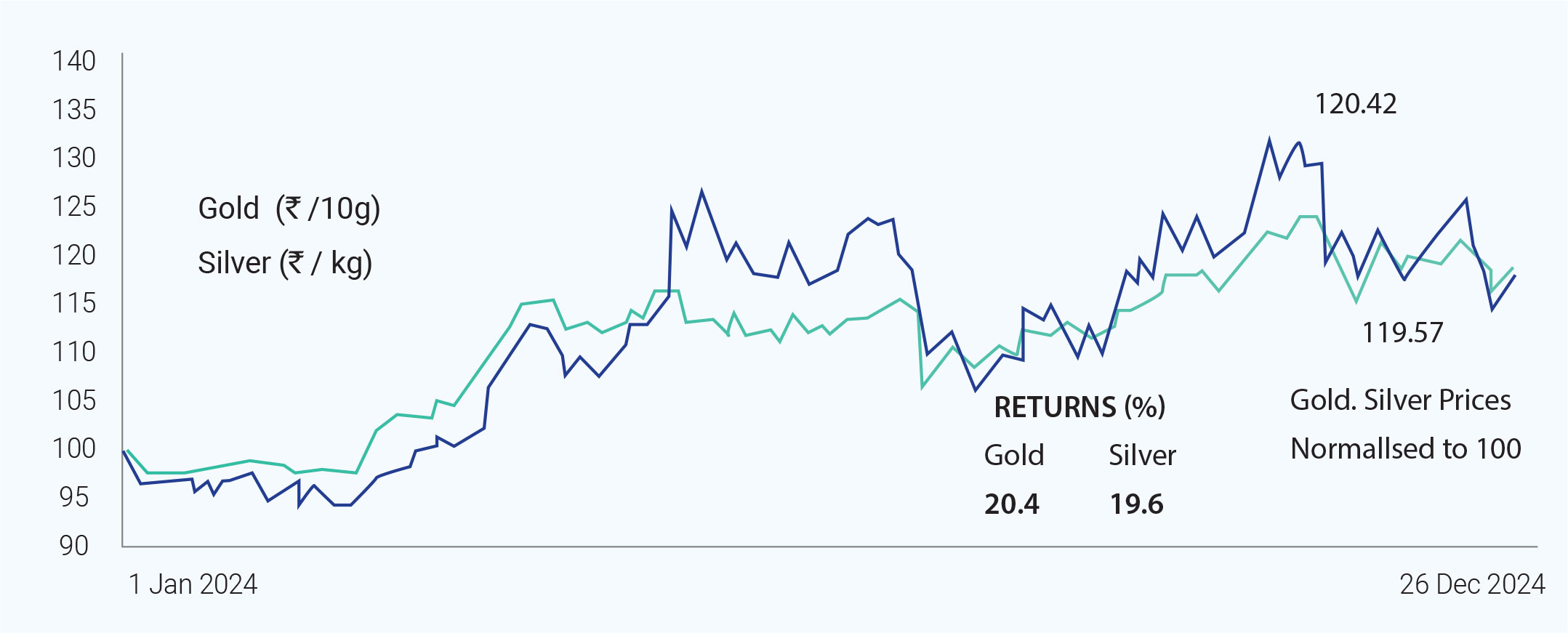The performance of the Indian bullion market in December 2024 was shaped by a range of global and domestic factors, including economic conditions, geopolitical tensions, central bank actions, seasonal demand, inflationary pressures, currency fluctuations, and import trends. A major factor influencing bullion

prices was the anticipation of a 25-basis-point interest rate cut by the U.S. Federal Reserve. Lower interest rates typically boost the appeal of non-yielding assets such as gold and silver, prompting investor interest in these precious metals. Geopolitical developments, including tensions surrounding North Korea and Russia, provided further support to gold prices as investors flocked to safe-haven assets. In addition, China’s central bank resumed gold purchases after a six-month pause, signalling robust demand from central banks, which plays a significant role in driving global gold prices. December is a month marked by increased demand for gold in India, driven by the wedding season and festivals. Retailers typically stock up on inventory to meet consumer needs, creating upward pressure on prices. Additionally, inflation concerns played a role, as higher inflation generally leads to greater demand for gold as a hedge against rising prices. Fluctuations in inflation data affected market sentiment and expectations regarding future monetary policy decisions. The performance of the U.S. dollar also had an impact, as a stronger dollar can make gold more expensive for holders of other currencies, potentially reducing demand. India’s gold imports followed a cyclical trend, with a significant drop in December 2024 after record-high imports in November. Early in December, gold prices remained relatively stable, with 24K gold priced at ₹78,030 per 10 grams on December 18. However, geopolitical concerns and market volatility led to fluctuations in the latter part of the month. By December 27, gold prices increased for three consecutive days, reaching ₹77,890 per 10 grams in Delhi, supported by heightened tensions in the Middle East that drove investors to seek safety in gold. As December drew to a close, gold prices saw a slight decline, falling to ₹78,003 per 10 grams in Delhi on December 30, amid lower trading volumes due to the holiday season. On December 31, gold prices further dipped to ₹75,500 per 10 grams in Mumbai and ₹75,710 in Delhi, reflecting a ₹420 decrease from the previous day. This downward trend was primarily driven by profit-taking among investors and market adjustments due to broader global conditions. Silver prices mirrored gold’s performance, starting strong but facing fluctuations throughout the month. On December 18, silver was priced at ₹92,500 per kg. By December 27, silver saw a modest increase to ₹91,700 per kg, driven by firm global trends and some industrial demand. However, by December 31, silver prices dropped to ₹87,310 per kg in Delhi, following a broader decline across precious metals as traders adjusted their positions toward the year’s end. To summarise, gold and silver prices in December 2024 initially rose due to safe-haven demand fuelled by geopolitical tensions, but ultimately faced declines by month-end due to profit-taking and the seasonal slowdown in trading activity. The bullion market in India remained influenced by both global economic factors and domestic seasonal demand throughout the month.

